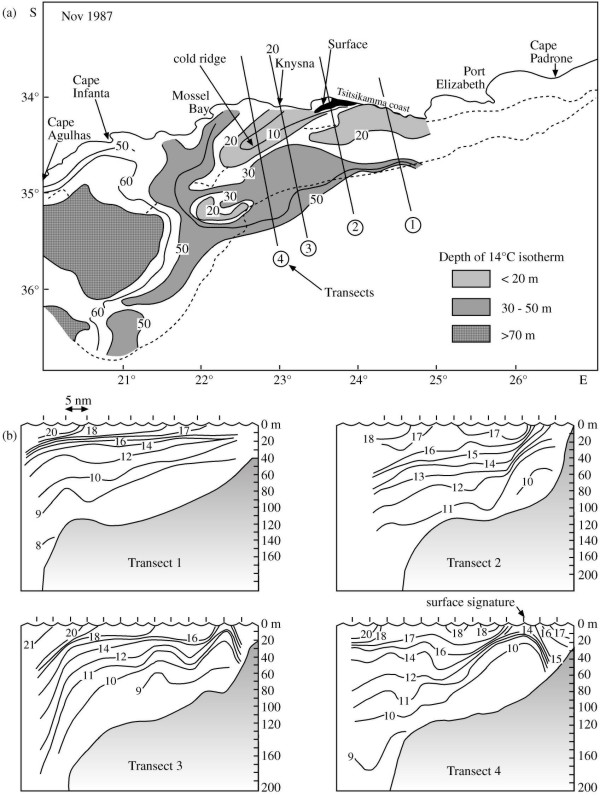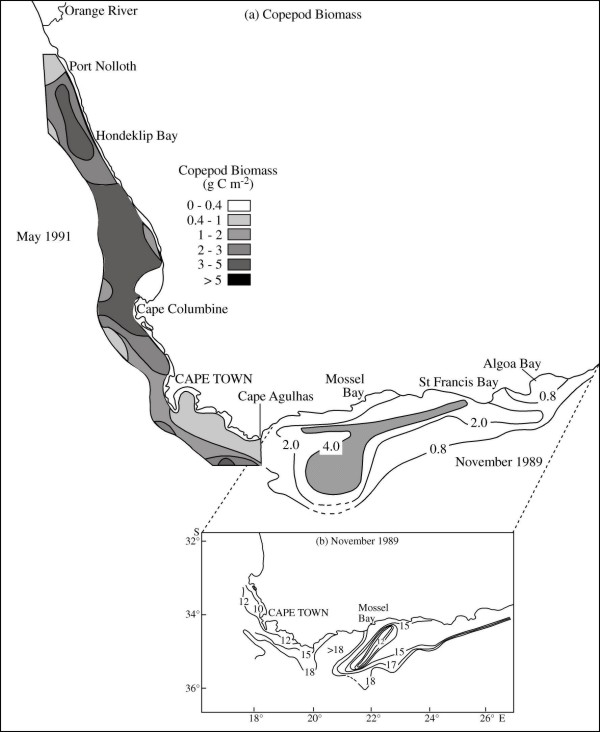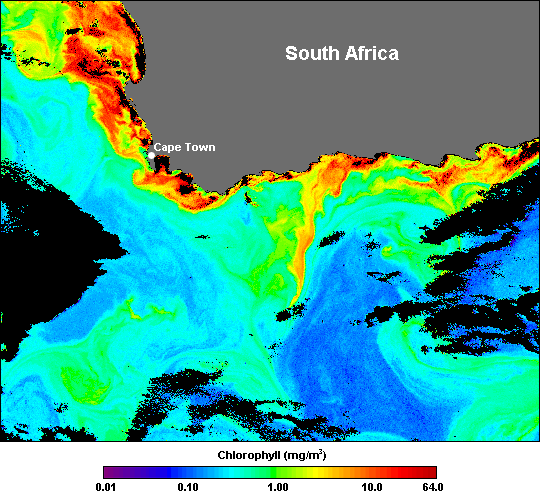Cold Ridge
Dowload the PDF of this lesson by clicking here
| Cold Ridge |
 |
The "cold ridge" is a shallow, quasi-permanent feature found on the Central Agulhas Bank off Mossel Bay. The ridge consists of cold upwelled water which causes an upward doming of the thermocline (refer to Figure 1). This is a subsurface feature which remains on the shelf in depths of 100-150m (Roberts, submitted). Elevated chlorophyll concentrations occur over the cold ridge resulting in high densities of copepods being assosciated with this feature (Hutchings et al., 1995) (refer to Figure 2). Cyclonic circulation around this feature enhances local retention of these copepods (Boyd and Shillington, 1994). |
|
Figure 1 |
 |
Various forcing mechanisms have been proposed for the "cold ridge". Along the shelf edge, up-slope veering of the bottom boundary layer (driven by the Agulhas Current) or cross-current Ekman transport caused by sustained wind stress was suggested by Swart and Largier (1987). Boyd and Shillington (1994) thought that the upwelling could be related to the widening of the shelf between Port Elizabeth and Knysna. After further investigation, Roberts (submitted) proposed that the "cold ridge" is in fact an intermittent upwelling filament, formed as a result of wind driven coastal upwelling that is advected in a south-west direction by the westward shelf current. |
|
Figure 2 |
 |
Intense summer upwelling tends to lead to greater "cold ridge" stability, although the "cold ridge" is at times absent during summers, especially during ENSO events. Despite intensive coastal upwelling, the "cold ridge" is not always formed. This could be due to the lack of offshore advective forces, which are needed to form the "cold ridge". The study of this feature is important as it stimulates primary production (Roberts, submitted) (refer to Figure 3). |
|
Figure 3 |
CLASSIC PAPER
Roberts, M. J. (2004) Chokka Squid (Loligo vulgaris reynaudii) abundance linked to changes in South Africa's Agulhas Bank ecosystem during spawning and the early life cycle submitted to ICES Journal of Marine Science, 61:000-000.
Bibliography
- Boyd, A. J. and Shillington, F. (1994). Physical forcing and circulation patterns on the Agulhas Bank. South African Journal of Science, 90, 114-122.
- Hutchings, L., Verheye, H. M., Mitchell-Innes, B. A., Peterson, W. T., Huggett, J. A. and Painting S. J. (1995). Copepod production in the southern Benguela system. ICES Journal of Marine Science, 52, 439-455.
- Swart, V. P. and Largier, J. L. (1987). Thermal structure of Agulhas Bank water. South African Journal of Marine Science, 5, 243-253.



